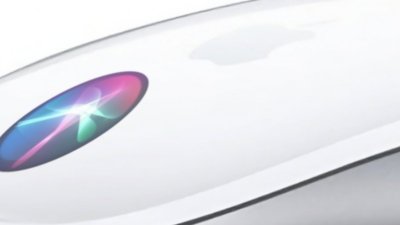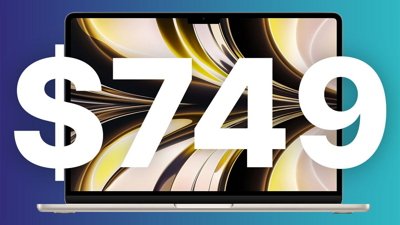In an industry captivated by cheap commodity components, Apple's ability to command healthy profit margins for "magical," premium priced products designed to delight users— rather than just solve basic problems in a cost effective way— has confounded analysts and pundits for the better part of 40 years. It appears Apple will continue to introduce upscale new products in 2014, rather than following the industry into a race to the bottom in pricing.
The cheap iPhone that wasn't
Throughout 2013, a wide variety of analysts were insisting that Apple needed to bring a cheap iPhone to market. Jefferies analyst Peter Misek predicted a cheap iPhone in the range of $200 to $250. Just one month before Apple launched its new iPhones for 2013, Piper Jaffray analyst Gene Munster expected a new model "priced at $300 without a contract."
However, after refreshing its lineup last fall, Apple's cheapest iPhone remained at around $400, while the middle tier 5c was priced at $550 and its high end 5s started at $650 and went as high as $850. Analysts, who had been stewing fears that a cheap new iPhone would erode Apple's margins, turned around and skewered Apple for not doing what they expected, slashing their stock price expectations even lower on fears Apple couldn't maintain its sales volumes in such a competitive climate replete with a cheap phone.
We can only speculate about whether a cheap new iPhone could have stolen away more sales from the already sickly numbers of Samsung's Galaxy S4, HTC's One, LG's G2, Google's Moto X and Nokia's Lumia line sold over the holiday quarter. All of those models were outsold by even Apple's middle tier iPhone 5c, which in turn was wildly outsold by the iPhone 5s.
A cheaper iPhone quite likely would have eaten into sales of Apple's other iPhones; hurt the Apple brand by cheapening new users' initial experience and dramatically affected Apple's revenues and profits, the same way that Samsung's focus on cheap, low end phones contributed to plummeting average selling prices and its slim profit margins.
Race for the future
We can't run the 2013 experiment over again to find out exactly what would have happened had Apple offered a very low end iPhone. We do know, however, that Apple earned more than everyone else in the mobile industry, giving it more capital to invest in even more sophisticated OS, chip, app and service developments and manufacturing capacity than anyone else. Apple took an astounding 87 percent of the entire industry's global phone profits just in the winter quarter.
Apple is quadrupling its headquarters' office space and plans to build 30 new retail stores this year: substantial projects that indicate long term expectations. All of those massive investments require very significant capital.
Had Apple blown $10-15 billion producing tons of profitless, cheap phones to win IDC's respect as the top volume commodity producer for 2013, it wouldn't have been able to also spend that capital to acquire more talent, technology and production capacity than even Google last year.
In terms of sales volumes, Apple was outsold by Commodore in the 1980s, by HP & Dell in the 1990s, by Nokia in the 2000s, and it's being outsold by Samsung in the 2010s. What's more remarkable is that Apple is now outselling those old competitors from the past. Apple has consistently won in the future. And that's clearly where Apple expects to win today. It's not wishing it could have won a ribbon for "most smartphones sold" in 2013, because having made the most money will eventually allow it to outpace Samsung the same way.
Samsung is also investing in the future, but it has been giving up half of its margins to "win" in the past in terms of market share. For an example of how to run yourself out of business, just look at what happened to Apple in the early 1990s when it decided to heed the advice of analysts and go for cheap, unprofitable volume sales with Performa Macs designed and sold like the commodity PCs everyone else was making.
Affordable luxury in a sea of cheap commodity
As Apple gears up to expand, it is not (so far at least) focusing on making cheaper devices. Instead, it has released a series of upscale luxury offerings. From the ultra thin iMac to new Retina Display MacBook Pros, the thin and light MacBook Air, high end Mac Pro, slim new iPad Air and 64-bit iPhone 5s, Apple has more luxury class, premium devices for sale than it has in the middle of the market.
Even Apple's entry level models are significantly higher end that the economy class phones, tablets and PCs that make up the bulk of its competitors' sales, as evidenced by the fact that Apple doesn't even have an iPhone cheaper than $400, while the Average Selling Price of smartphones in general is, according to IDC, now at $335. Apple's iPhone ASP for 2013 remained at $650 while Android's dropped down to $276.
This is particularly remarkable because Samsung (and other Android licensees) price their premium phones at or higher than iPhones. The base price of Samsung's 16GB Galaxy S5 Android phone and its 16GB ATIV SE Windows Phone are both $600 through Verizon Wireless, while its baseline 32GB Note 3 starts at $700. That's more than the $550 Verizon charges for Apple's 16GB iPhone 5c, and at or above the full $650 price of the 16 GB iPhone 5s, even before you compare the fact that a 16GB iOS device has more available storage than a 16GB Android device, particularly one from Samsung.
While it would certainly like to earn as much as Apple, Samsung doesn't usually get full price; it is currently offering even its brand new Galaxy S 5 in "buy one get one free" deals. It does however highlight the fact that Android isn't making phones cheaper, it's just making cheaper phones.
Apple's top of the line iPhone 5s is its best selling model. All of Samsung's premium phone models put together only amount to a third of the company's total "smartphone" sales. That's a huge difference in the demographic of customers that Samsung is attracting with its focus on cheap commodity phones.
Broadly available luxury
Throughout its existence, Apple has released a series of products showcasing technological advances that have at times simply embarrassed the rest of the industry, while at the same time creating new, premium-priced product categories and raising the bar of what the public considered to be minimally sufficient going forward. After iPod, a DiscMan or USB 1.0 MP3 player wasn't good enough. After iPhone, a Java button phone wasn't interesting anymore. After iPad, thick Tablet PCs were toast.
Apple's $400 iPod in 2001; the $600 iPhone in 2007 and 2010's $500 iPad and $1000 MacBook Air induced competitors to scramble to make knockoff "MP3 players" and "smartphones" and "tablets" and "ultrabooks," but Apple still hasn't been outmaneuvered in any one of those premium product arenas where it redefined and set new price points for products designed to delight its customers.
The best that can be said of Apple's competitors is that they are working harder to build greater quantities of lower end, cheaper products that they profit considerably less from as they sell them to customers who report significantly less satisfaction from owning and using them. In the conclusions arrived at by IDC, Gartner and Strategy Analytics, such losing is mysteriously portrayed as winning.
The myth of commodity
The idea that Apple's innovative products are fated to overrun by commodity sales of competitors' duplicates is not reflected in modern reality. Despite many copies of Apple's iPod— most of which were cheaper and supported by large firms ranging from Microsoft to Dell to Samsung and Toshiba— none became even remotely as successful.
And while there are lots of phone companies that make iPhone-like devices that compete with the iPhone, none make Apple-like profits nor do they sell iPhone-like devices in iPhone-like quantities. Samsung, the only company even close to Apple in "smartphone" sales, primarily sells low end devices that it internally calls "carrier friendly good enough" phones. Last year, Samsung sold around 100 million Galaxy S and Note premium-tier phones, compared to 150 million iPhones sold by Apple.
Apple is the only significant luxury goods vendor in the high volume consumer tech industry. Many bloggers and tech industry columnists specialize in generating great quantities of low value content aimed at covering virtually every base and filling every possible niche, a role for which they earn virtually nothing. To them, Samsung and Google are the heroes, simply through a familial affinity. They understand what commodity producers do, but find Apple's business foreign and mystifying, and vent their xenophobia at every opportunity.
In the tech industry, low-end companies appear to be winning the conversation. However, they're losing the war in profits, and there's plenty of historical precedent supporting the idea that they will continue to lose in the future.
Apple's balance of luxury and affordability
Apple hasn't simply raised the price of technology. In many areas, it has aggressively slashed prices to make its premium technology broadly affordable. One obvious example is the $500 iPad, which appeared in 2010, a time when Tablet PC vendors like Samsung were struggling to sell bulky, heavy and anemically slow tablets like the Windows-powered $775 Samsung Q1EX-71G.
The following year, Google's 2011 Android 3.0 Honeycomb initiative attempted to push tablet buyers to pay at least a 20 percent premium over Apple's iPad for more complicated tablet devices like the Motorola Xoom. Microsoft attempted to do the same thing in 2012 with its Surface RT and its essentially requisite Touch Cover.
However, no amount of lavish press and liberal advertising in either case convinced customers to pay higher prices for either Google or Microsoft's response to Apple's iPad. Android and Surface tablets, along with other knock off iPods, iPhone alternatives and UltraBooks, all continue to struggle to remain viable, even at sharply discounted prices.
It's particularly interesting to note that Apple entered the smartphone area in 2007 with a product so much more expensive than Microsoft's mainstream offerings that Steve Ballmer was driven to mock its pricing with scoffing laughter. However, just a few years later Apple had effectively drained the profitability from all of Microsoft's licensees, while at the same time driving Nokia's Symbian, RIM's Blackberry and Palm from lavish profits into financial ruin.
Apple's future in premium gear
The way Apple plays its cards has allowed it to win hand after hand in virtually every game it chooses to play, despite the outrage and contempt voiced over its style by analysts and pundits who would prefer Apple played like all the market losers have. That suggests that Apple will continue to face intense criticism in 2014.
We don't yet know what Apple will do in 2014, but we do have some hints. Signs point toward luxury-class new wearable products that would, like the iPod and iPhone, introduce a new product category that takes very little from the existing products in the wearables space and instead established an entirely new price tier and product definition, one that can deliver a compelling "use case" that today's "smart watches" haven't been able to do.
The direction Apple is heading with iPhone also appears to have an upscale trajectory. While the rest of the industry is fixated on cheap phones, Apple is catering to customers who want to pay more for innovative, luxurious, high tech features.
Compare Samsung's high end flagships, which over the past two generations have been differentiated largely by app-like software features like hand waving and camera effects, with Apple's introduction of Touch ID, 64-bit A7 processing and M7 motion co-processing, features that helped entice the majority of iPhone buyers to jump for the most expensive model.
We don't have as much public data on the kinds of Macs that Apple is selling, but it appears clear that the company's cheapest Mac mini is not a massive seller, while its pricy MacBook Air and MacBook Pro lines are. Armed with keen insight into what sells in its own retail stores and across the retail partners it closely manages, Apple has invested in making expensive, premium MacBook models from precision crafted aluminum shells and Retina Displays, not plastic netbooks or even low end laptops.
The last time Apple reinvented a major Mac model, it delivered a pricey, high tech Mac Pro aimed directly at serving the needs of high end customers, rather than revisiting the Mac mini or building a copy of the kind of commodity, volume PC boxes that dominated the market in the 1990s.
Even Apple's iPad, which is effectively a streamlined, low cost computing device that works as an alternative to netbooks or a cheap PC box, has been trending upscale. Apple rapidly introduced a series of faster models with Retina screens, then jumped to an all new iPad Air form factor that was both light and thin, not just "good enough" and cost effective.
Clearly, Apple is paying more attention to its own internal data on what buyers want than the recommendations of analysts who who so strongly believe in cheap commodity that they are blind to the very profitability that drives the capitalism they analyze.
 Daniel Eran Dilger
Daniel Eran Dilger





-m.jpg)






 William Gallagher
William Gallagher
 Andrew Orr
Andrew Orr

 Christine McKee
Christine McKee
 Andrew O'Hara
Andrew O'Hara


 Malcolm Owen
Malcolm Owen









270 Comments
Thank you for another excellent article, Mr. Dilger. I wish more companies were like Apple. Not just in technology but in all walks of life, I so often get the feeling that businesses think that they have to cater for the lowest common denominator. They do this because they see the cheap end of things selling well and think that that is the only way to survive. Create something loveable, something which has had a lot of thought, care and attention to detail invested in it, and we will buy it.
Apple has dominated the "affordable luxury electronics" market at every turn but I think a wrist-worn device market ads a lot more complexity than Apple has ever seen. I'm certain they are the company that can pull it off but I'm not sure that time is now (even though I hope it is).
Apple does a cheap iPhone is called a second hand device ! I save up and buy the best ! I love this article
Another great article by DED!
The fact that computing devices are becoming essential, even critical, to the lives of a majority of people should tell us that having the best available device is not simply a luxury. It is a necessity. Apple gear is an affordable necessity, not an affordable luxury. Cheap, insecure imitations are still popular among the 'wannabes' because they haven't yet figured out why the more expensive gear is essential to their life goals. Look at the numbers: switchers from Android to iOS far outnumber the reverse scenario. People who started with the cheap stuff are starting to realize the difference and the importance to them of the more expensive stuff.